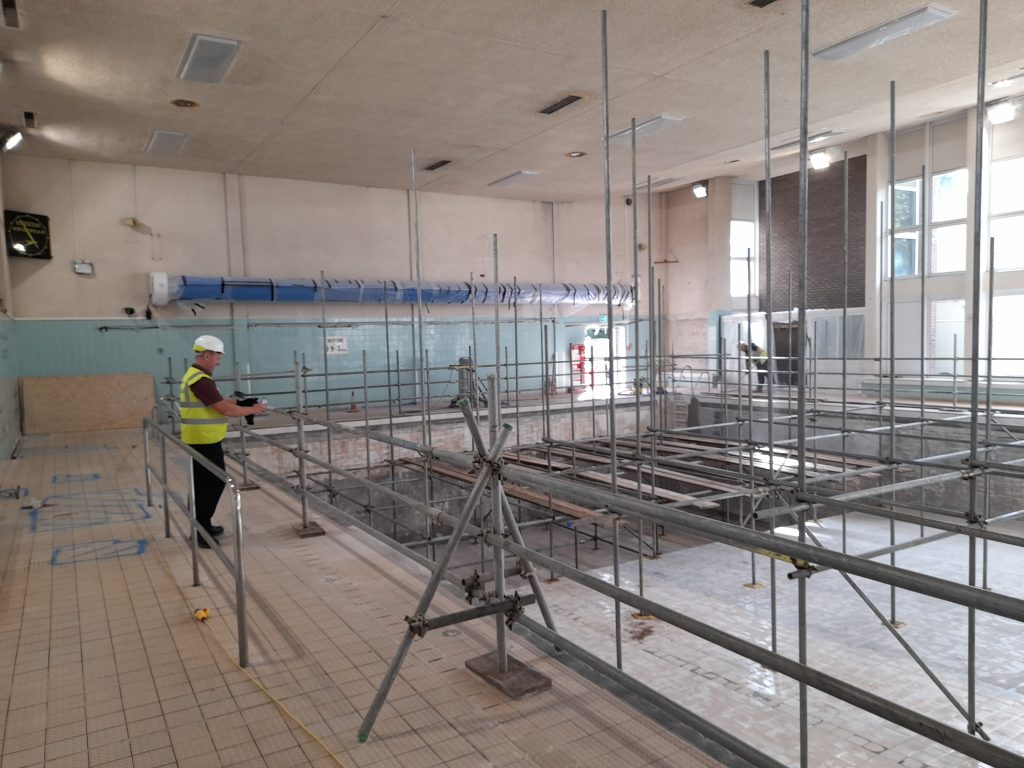North East Derbyshire District Council's Story
North East Derbyshire District Council is committed to becoming carbon neutral by 2030 and has also declared a Climate Emergency.
This has led to a number of strategies and policies being put in place to address this issue both within its own stock and the housing stock. The Council has also been working in partnership with Parish Councils and direct with residents to give them the essential knowledge needed in order to achieve decarbonisation across the district.
Healthy living and fuel poverty are also key drivers as part of achieving an overall net zero by 2050. A major part of this effort was to identify the most heat-hungry sites that operated within the Council's own stock, which for the Council included its four leisure centres. The centres with swimming pools are naturally energy-hungry and are open for long periods of the day to allow customers to use the facility. In order to make a tangible dent within the Council's own carbon emissions, Eckington Swimming Pool was identified as the first demonstrator due to its imminent pool refurbished plans. Effective solutions to make it more heat efficient were implemented immediately such as insulating the roof and cavity walls, putting in a state of the art pool cover along with saving on lighting costs by upgrading all units to LED.
Whilst this was happening, a specialist contractor was commissioned to conduct a technical energy audit which could inform a Public Sector Decarbonisation Scheme bid. From this, a comprehensive tangible bid was placed to the amount of £1M in order to source and implement the vast heat pump and air recovery systems. This is currently now underway and stands to remove 277 tonnes of CO2 per year. This is effectively taking the equivalent of over 100 homes off the grid permanently and will have an immediate positive impact on the air quality.
When this is combined with the successful external wall insulation programme that is being rolled out across the district to 100s of hard-to-treat inefficient council housing, the savings are soon starting to add up to 1000's of tonnes of CO2 a year, which make a marked impact on the Tyndall forecast data.
The Council is also looking to roll this project across to the Dronfield Sports Centre and a grant of £50,000 has been awarded from SALIX in order to carry out another highly technical audit. From this, a bid will be put in again to cover the cost of converting it from fossil fuel gas to the same technologies fitted at Eckington Swimming Pool.
Again the electricity is sourced from a green-certified supplier that guarantees that it comes only from wind or solar farms. By addressing the biggest energy consumers, the Council seeks to make these an exemplar whilst using its influence to encourage and assist all residents, parishes and businesses within the district.
Useful Learnings from North East Derbyshire District Council
When carrying out the initial installation works for the heat pump, there were a few issues that needed addressing and unexpected costs incurred as a result of this. Due to the gas boilers being removed and the heat pumps being electric, there was a sudden requirement to upgrade the local substation. This was down to the technologies requiring a vastly larger load which in turn could blow the station. This meant that the Council was obliged to pay for the works to the station in order to it to be able to cope with the extra loads to the grid.
Our main learning from this was to work with the Midlands Energy Hub and Western Power Distribution (the local district network operator) as early as possible. This way the DNO can be engaged with and plan of action and thus reduce the impact of having to upgrade the grid last minute and/or minimize costs if needed.
In addition, heat decarbonisation projects can be complex and lead to far reaching implications and unforeseen costs, especially when you include the complexity of a leisure centre plant room. Be sure to obtain specialist advice at the earliest stage and where possible, engage with early with a contractor. This ensures that the design and estimates in relation to full costs and forecast emission savings are realistic. This helps in decision making and delivery. Make use of government funding such as the Salix administered, Low Carbon Skills Fund to assist with feasibility costs.
North East Derbyshire District Council's Metrics
Systems removed and replaced with energy-efficient alternatives (air source heat pump, heat exchange and high efficiency pool management systems that include self regulating pumps and UV filters).
Types of sources of electricity (wind and PV).







